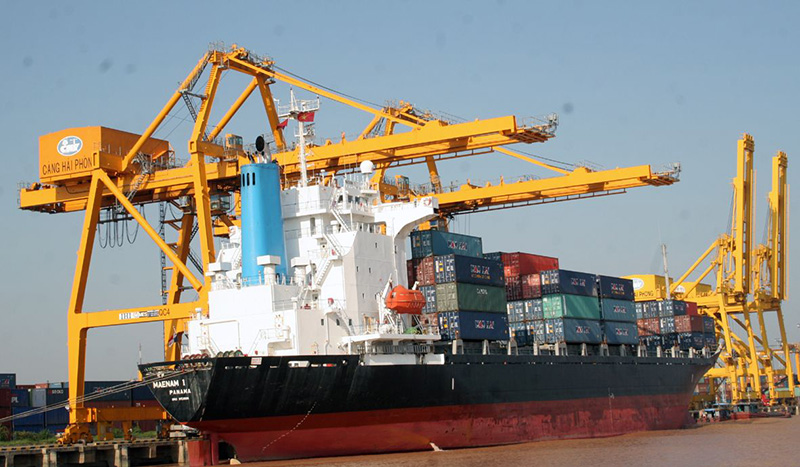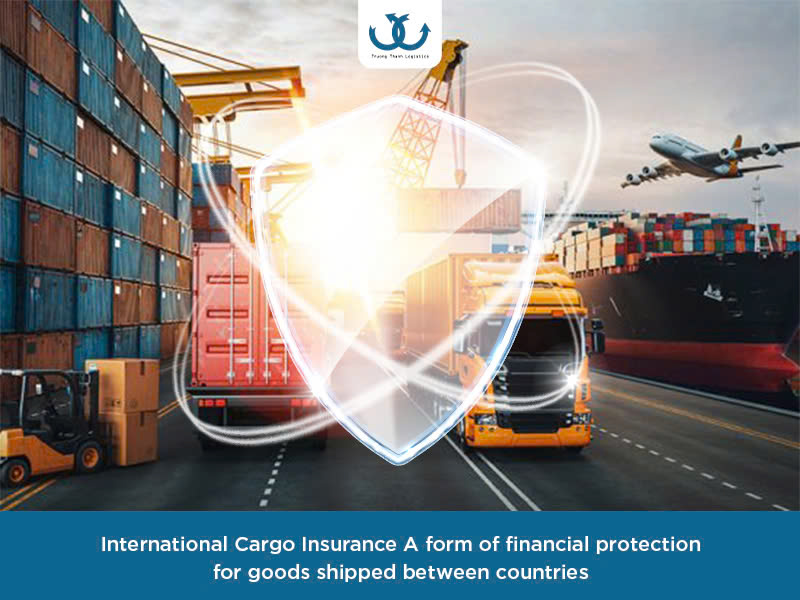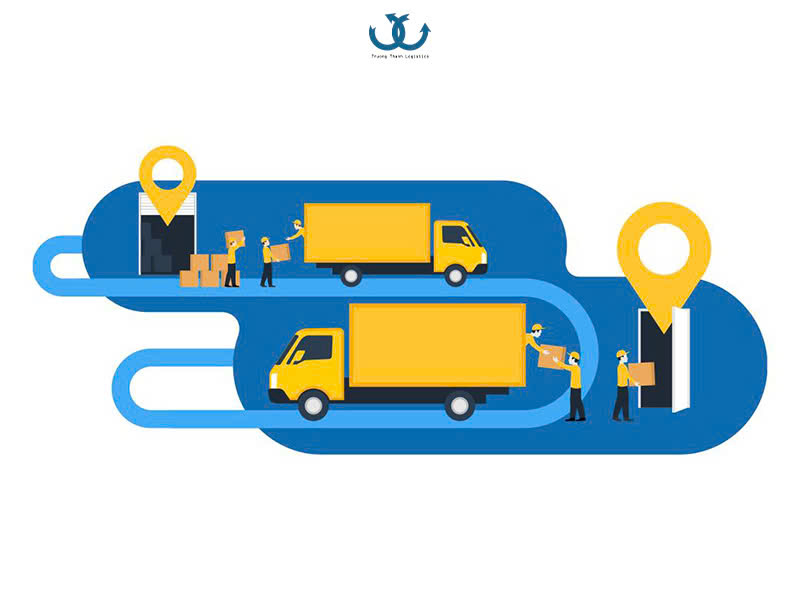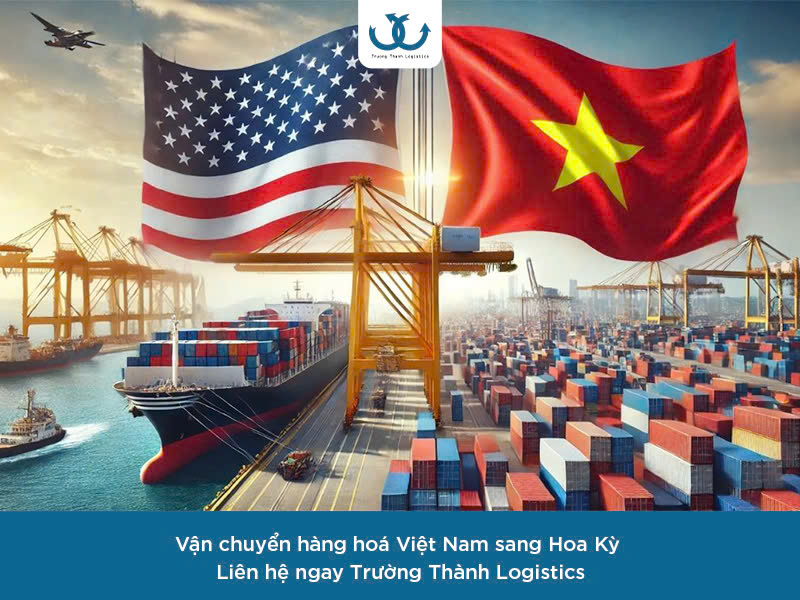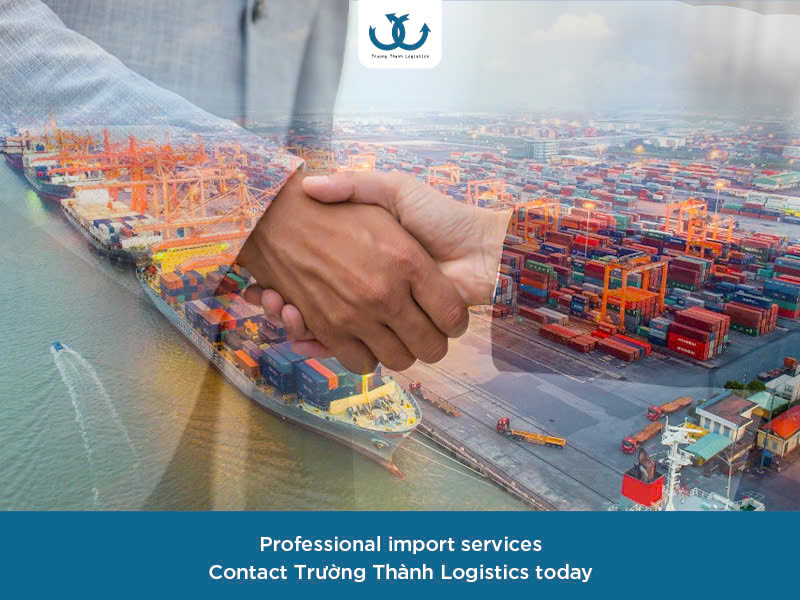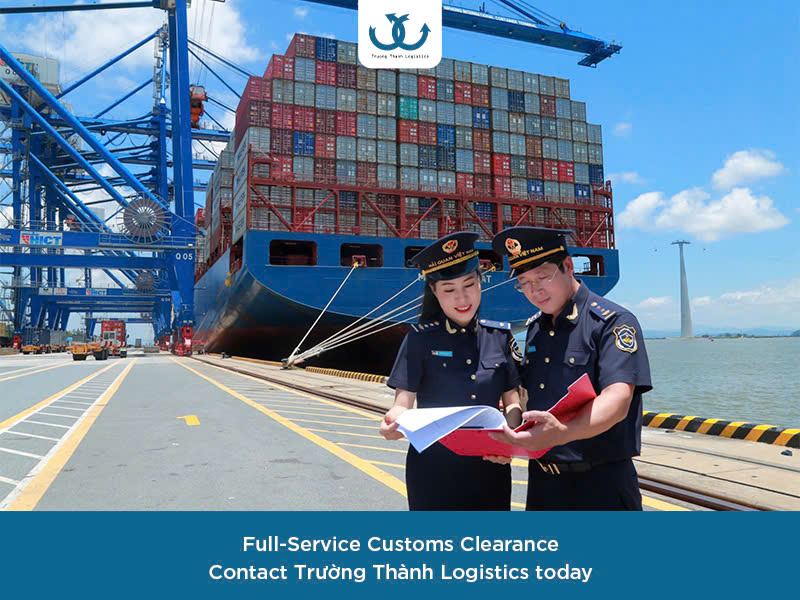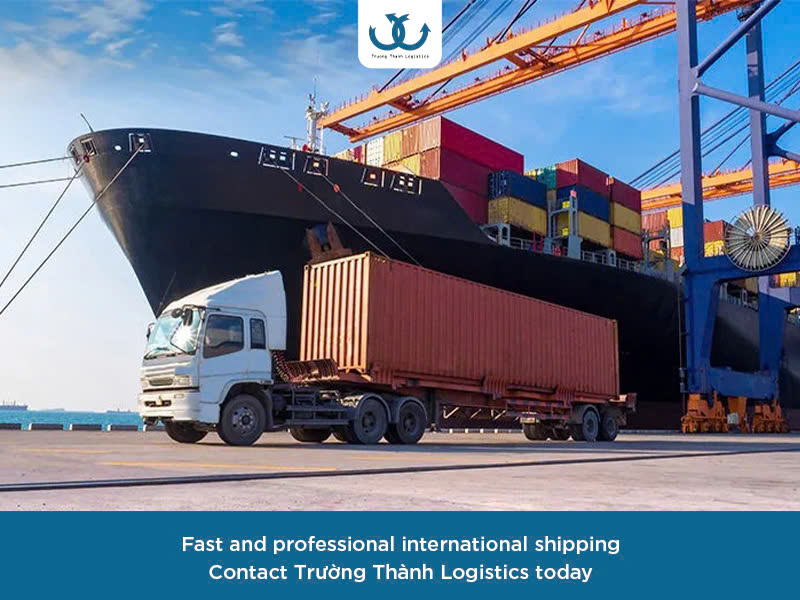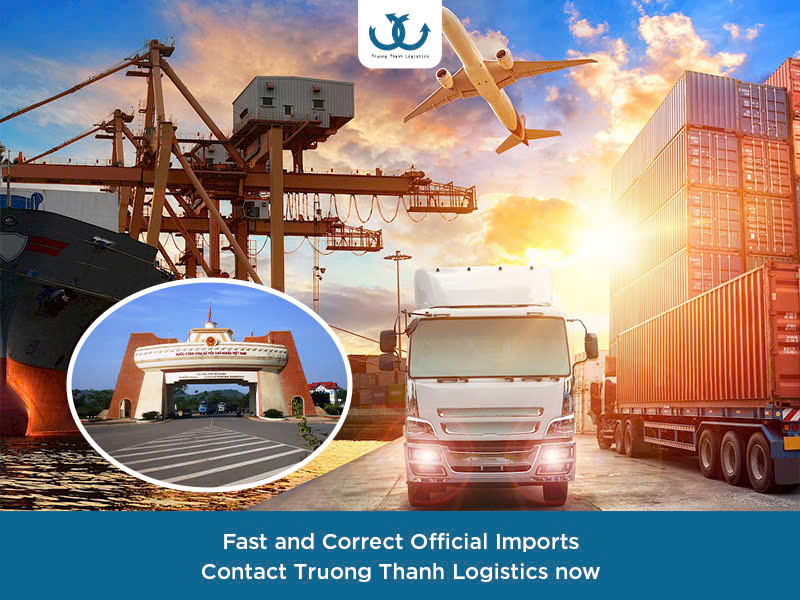Road container shipping is one of the most popular logistics methods in Vietnam, especially with the strong growth of imports and exports projected for 2025. Thanks to its flexibility, accessibility to diverse locations, and reasonable costs, this method plays a crucial role in ensuring a smooth supply chain.
However, to transport containers safely, efficiently, and in compliance with legal regulations, businesses need to pay attention to many factors. These range from selecting the appropriate container and properly packing goods to managing procedures and ensuring traffic safety. Even a minor error in the shipping process can lead to cargo damage, delivery delays, or even legal violations.
This article provides detailed considerations for road container shipping, helping businesses optimize their logistics processes and minimize risks.
1. Choosing the Right Container for Your Goods
Selecting the appropriate container is the first and most important step in road freight. Each type of cargo has specific requirements for size, preservation, and safety. An unsuitable container can damage goods, increase shipping costs, or violate technical regulations. Given the variety of containers available today, businesses need to understand the characteristics of each type to make the optimal decision, ensuring goods are safely protected throughout their journey.
+ Determine the type of goods: Perishable goods like frozen food require reefer containers with temperatures as low as -23°C, while dry goods such as rice and coffee are suitable for dry containers. Dangerous goods like chemicals need ISO-certified tank containers.
+ Container size: 20-foot, 40-foot, or 45-foot containers are used depending on the volume and weight of the goods. A 20-foot container is suitable for heavy items like cement, while a 40-foot container is ideal for bulky goods such as furniture.
+ Check container condition: Before use, containers must be inspected to ensure they are clean, dry, free of holes, and not deformed. Damaged containers can lead to cargo leakage or rejection at the port.
+ SOC or COC containers: Shipper Owned Containers (SOC) are owned by the shipper and are suitable for special consignments, whereas Carrier Owned Containers (COC), owned by the shipping line, are more common and easier to lease. Businesses should consider cost and flexibility when choosing.

2. Proper Packing and Loading Techniques
Correct packing and loading not only protect goods from damage but also optimize container space, reducing shipping costs. In road transport, goods are subject to vibrations, impacts, and weather changes, requiring professional packing techniques and secure reinforcement. A mistake in this step can lead to breakage, loss, or penalties due to safety violations.
+ Proper weight distribution: The weight of the goods should be evenly distributed across the container floor, with the center of gravity near the center to prevent tipping. Heavy goods should be placed at the bottom, lighter goods on top, and dunnage materials like airbags or wooden planks used to prevent shifting.
+ Packing suitable for goods type: Fragile items like glass require wooden crates with straw or foam padding. Dangerous goods such as chemicals need specialized packaging and warning labels as per regulations.
+ Space optimization: Use standardized pallets and secure goods with straps or lashing to prevent movement. Truong Thanh Logistics’ cargo quantity calculation tool helps businesses accurately determine the amount of goods to load into a container, avoiding wasted space.
+ Symbols and labels: Clearly mark cartons or packaging to ensure proper stacking, preventing compression damage. Dangerous goods require international standard labels to ensure safety during transport.
3. Compliance with Legal Regulations and Shipping Procedures
Container transport by road requires businesses to strictly comply with legal regulations regarding traffic, customs, and fire safety, especially when transporting dangerous or oversized/overweight goods. Lack of documentation or violation of regulations can lead to fines, confiscation of goods, or delivery delays, impacting the business’s reputation.
+ Required documents: These include vehicle registration, technical safety inspection certificate, transport contract, oversized vehicle permit (if applicable), and cargo documents such as invoices and packing lists.
+ Load capacity regulations: Container trucks must comply with maximum load capacities as stipulated in Circular 46/2015/TT-BGTVT. Overloaded vehicles can be fined from VND 800,000 to VND 40 million, depending on the severity of the violation. Businesses must check cargo weight before transport.
+ Dangerous goods: Chemicals, gasoline, and oil require transport permits, hazard labels, and compliant vehicles as per Decree 104/2021/ND-CP. Lack of permits can lead to goods confiscation and heavy fines.
+ Customs procedures: For imported/exported goods, prepare customs declarations, Shipping Orders (S/O), and related documents to ensure quick clearance at the port.
+ Cargo insurance: Businesses should purchase insurance to protect against risks of loss or damage. Statistics show that insurance helps reduce financial losses by 70% in transport incidents.

4. Ensuring Safety During Transport
Safety is a crucial factor in road container transport, not only protecting goods but also ensuring the safety of drivers, vehicles, and other road users. Incidents such as accidents, rollovers, or cargo damage often stem from a lack of attention to safety. Businesses need to implement strict control measures to minimize risks throughout the journey.
+ Container sealing: Use lead or plastic seals with serial numbers to ensure goods are not tampered with. A broken seal can lead to disputes with the shipping line or customer.
+ Vehicle inspection: Tractor units should undergo regular inspections to ensure brakes, tires, and electrical systems are in good working order.
+ Safe driving: Drivers must possess an FC class driving license, a health certificate, and be trained in dangerous goods transport (if required). Businesses should monitor journeys via GPS to ensure compliance with speed limits and routes.
+ Weather and traffic contingency: Check weather forecasts and road conditions to avoid incidents like landslides or congestion. Plan an optimal route to save time and fuel.
+ Incident handling: Prepare contingency plans for accidents, breakdowns, or delays. Immediately contact the logistics provider to arrange alternative vehicles, avoiding impacts on the delivery schedule.
5. Optimizing Transport Costs
With logistics costs steadily increasing in 2025, optimizing road container transport costs is a top priority for businesses. From route selection and freight negotiation to surcharge management, every decision directly impacts profitability. An optimized transport process not only reduces costs but also enhances efficiency and customer satisfaction.
+ Choose the optimal route: The shortest route is not always the best option. Consider road conditions, toll costs, and transit time to select the most suitable route.
+ Negotiate freight rates: Freight charges depend on the type of goods, distance, and time. Businesses should request detailed quotes, including surcharges like Terminal Handling Charges (THC) and container demurrage/detention (DEM/DET) fees.
+ Cargo consolidation: Combine multiple small shipments into one container to reduce transport costs. Truong Thanh Logistics’ calculation tools help businesses optimize cargo volume.
+ Avoid peak season surcharges: Peak Season Surcharges (PSS) are typically applied from August to October. Plan shipments early to avoid these additional costs.
+ Utilize professional logistics services: Partnering with a reputable logistics provider like Truong Thanh Logistics helps optimize costs through an extensive transport network and experienced management.

6. Truong Thanh Logistics – Your Reliable Road Container Transport Partner
With over 10 years of experience in the logistics sector, Truong Thanh Logistics is proud to be a professional and reputable provider of road container transport services in Vietnam. We understand that every shipment is a commitment to quality and timeliness, and we always strive to deliver safe, efficient, and cost-effective transport solutions for businesses.
We commit to:
+ All-inclusive services: From container selection consultation, packing, and customs procedures to final delivery.
+ Professional team: Our logistics engineers and drivers are well-trained, knowledgeable about road transport and international regulations.
+ Modern technology: Our GPS tracking system and cargo quantity calculation tools help optimize the transport process.
+ Competitive pricing: Transparent quotes with no hidden fees, helping businesses save costs.
Road container transport requires professionalism, meticulousness, and experience to ensure safety, timely delivery, and cost optimization. Truong Thanh Logistics is a trusted partner, ready to accompany your business on every logistics journey. With our commitment to quality and dedicated service, we help you deliver your goods safely and efficiently to their destination.
Truong Thanh Logistics is committed to accompanying businesses, ensuring all on-spot import procedures are simple, transparent, and legally compliant.
For assistance with import and export information, international freight, sea transport or import entrustment, please contact Truong Thanh Logistics at the address:
Truong Thanh Logistics – Dedication, Prestige
Hotline: 0915 36 38 39
Headquarter: 5th Floor, Tower A, Song Da Building, Pham Hung, Nam Tu Liem, Hanoi.
Email: sale@truongthanhjsc.com
info@truongthanhlogistics.com
Website: www.truongthanhlogistics.com
Hai Phong Branch
Address: R.A11, TTC Building, 630 Le Thanh Tong, Hai An, Hai Phong
Da Nang Branch
Address: 27 Nguyen Ba Lan, My An Ward, Ngu Hanh Son District, Da Nang.
HCMC Branch
Address: Room 41, 4th floor, Casanova building, 85 Nguyen Son street, Phu Thanh ward, Tan Phu district, Ho Chi Minh City




